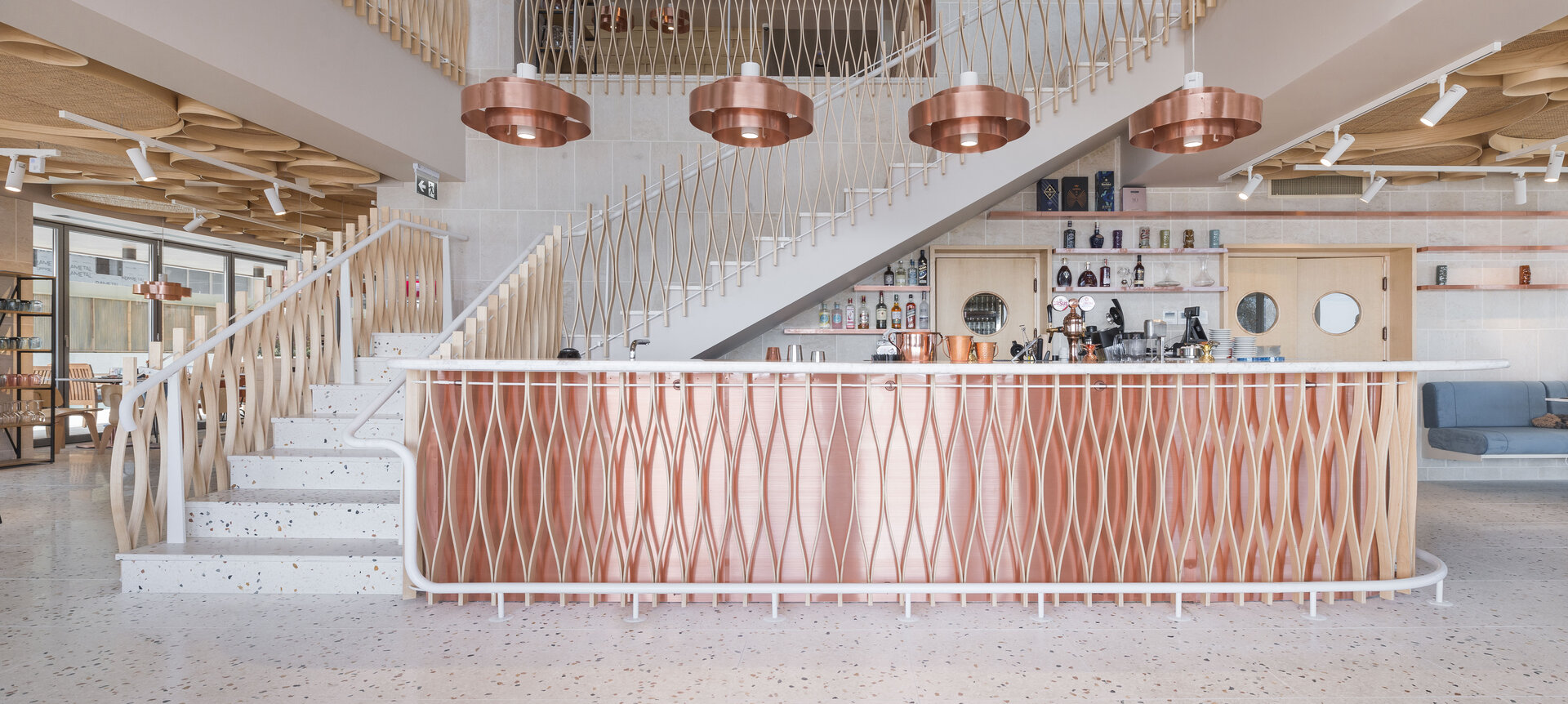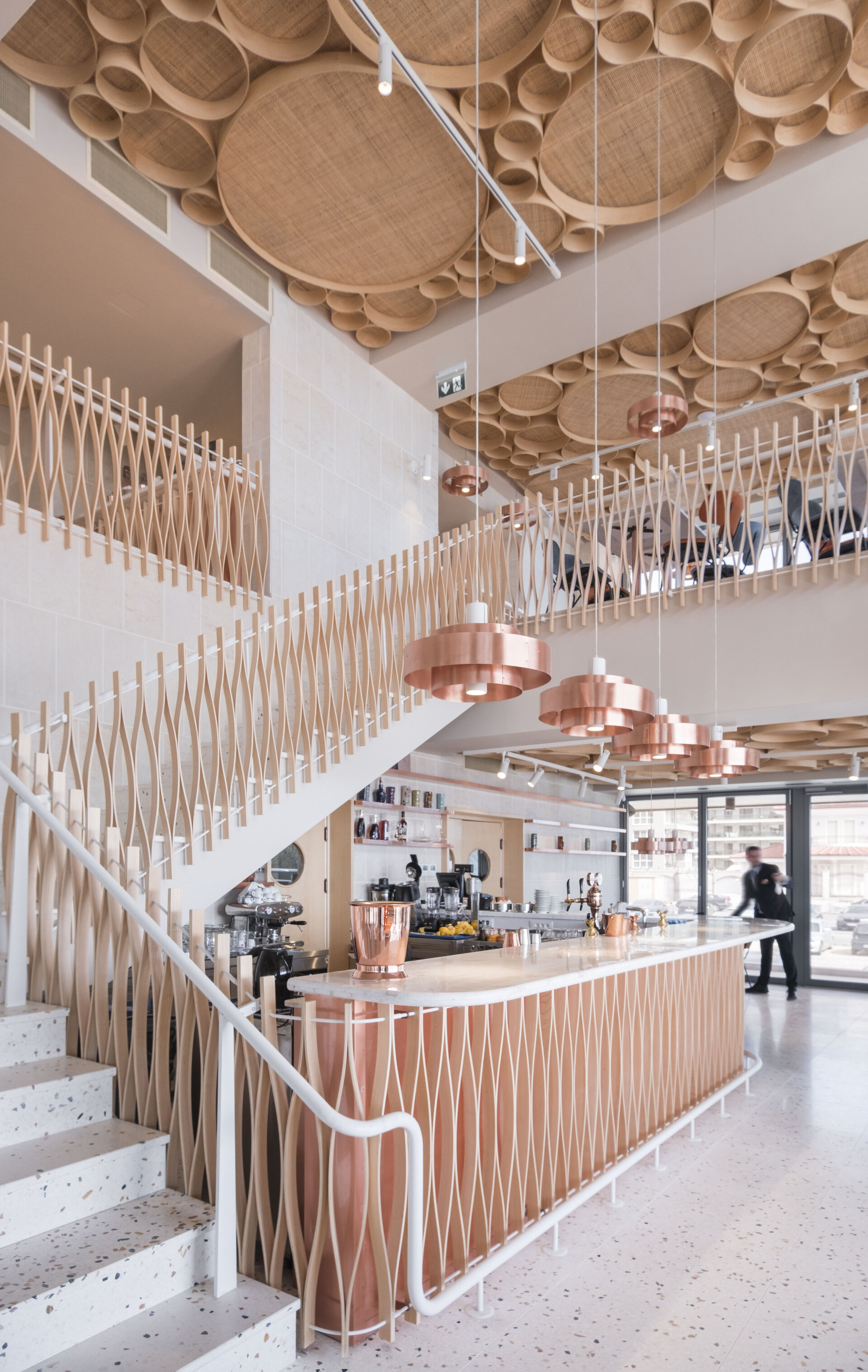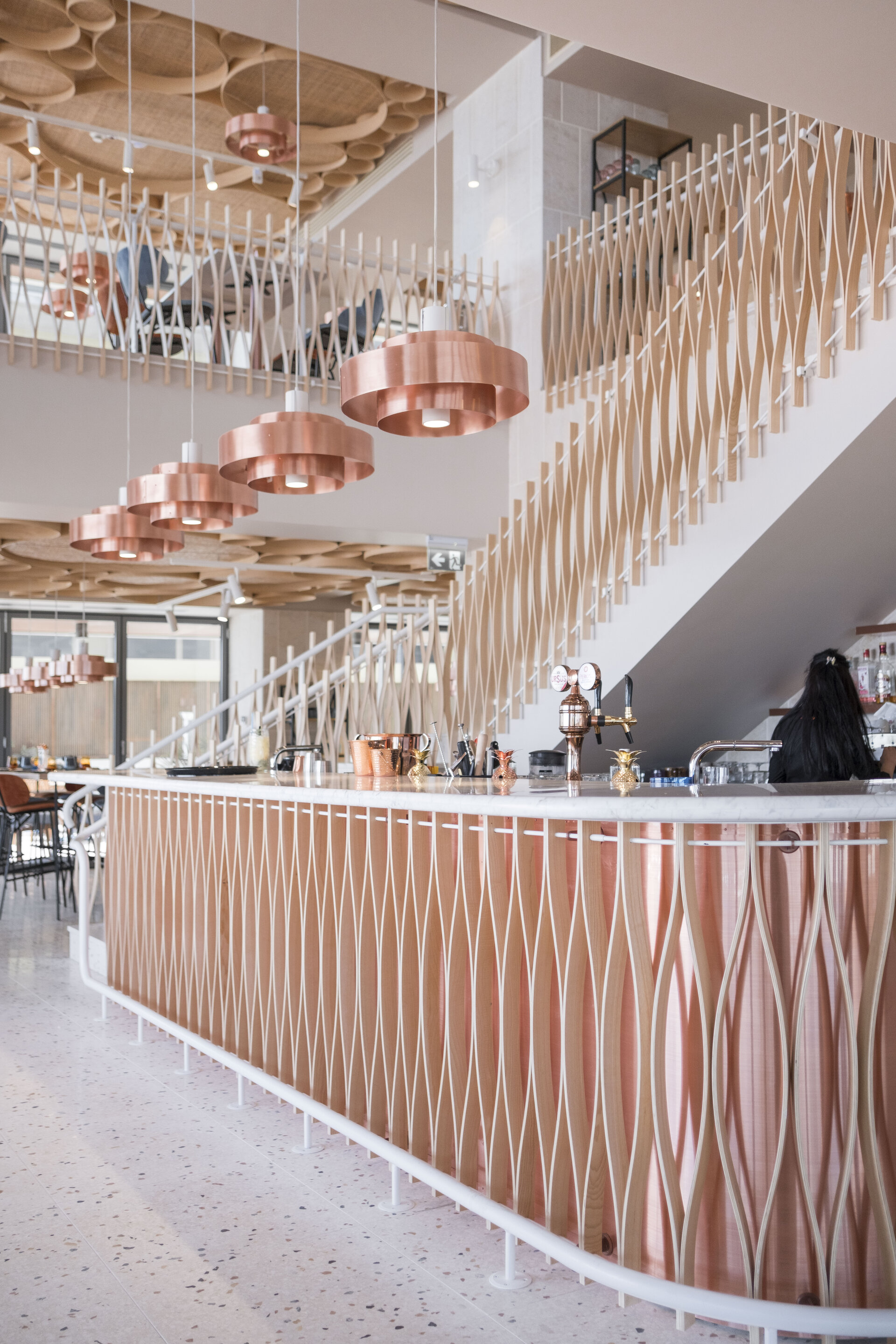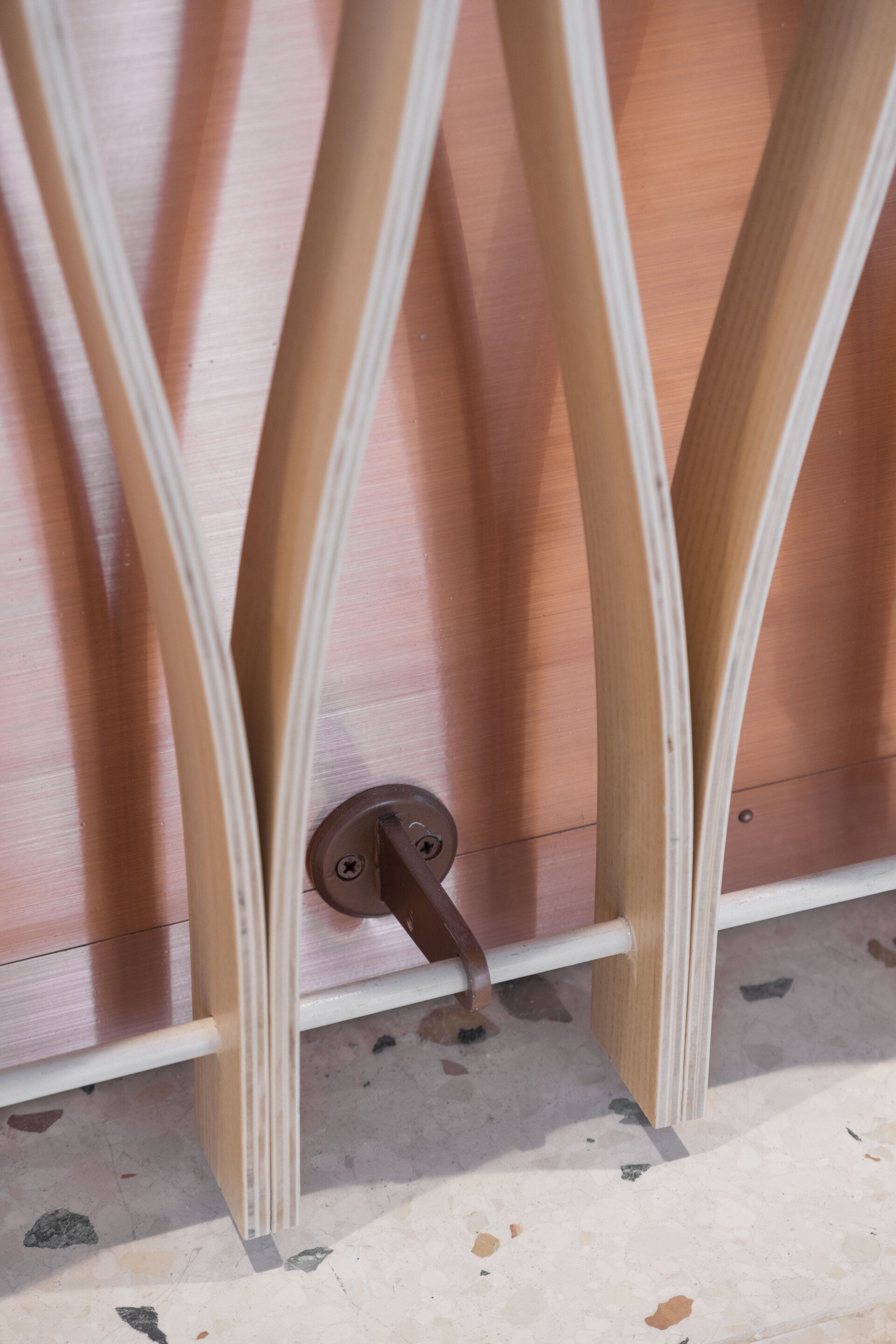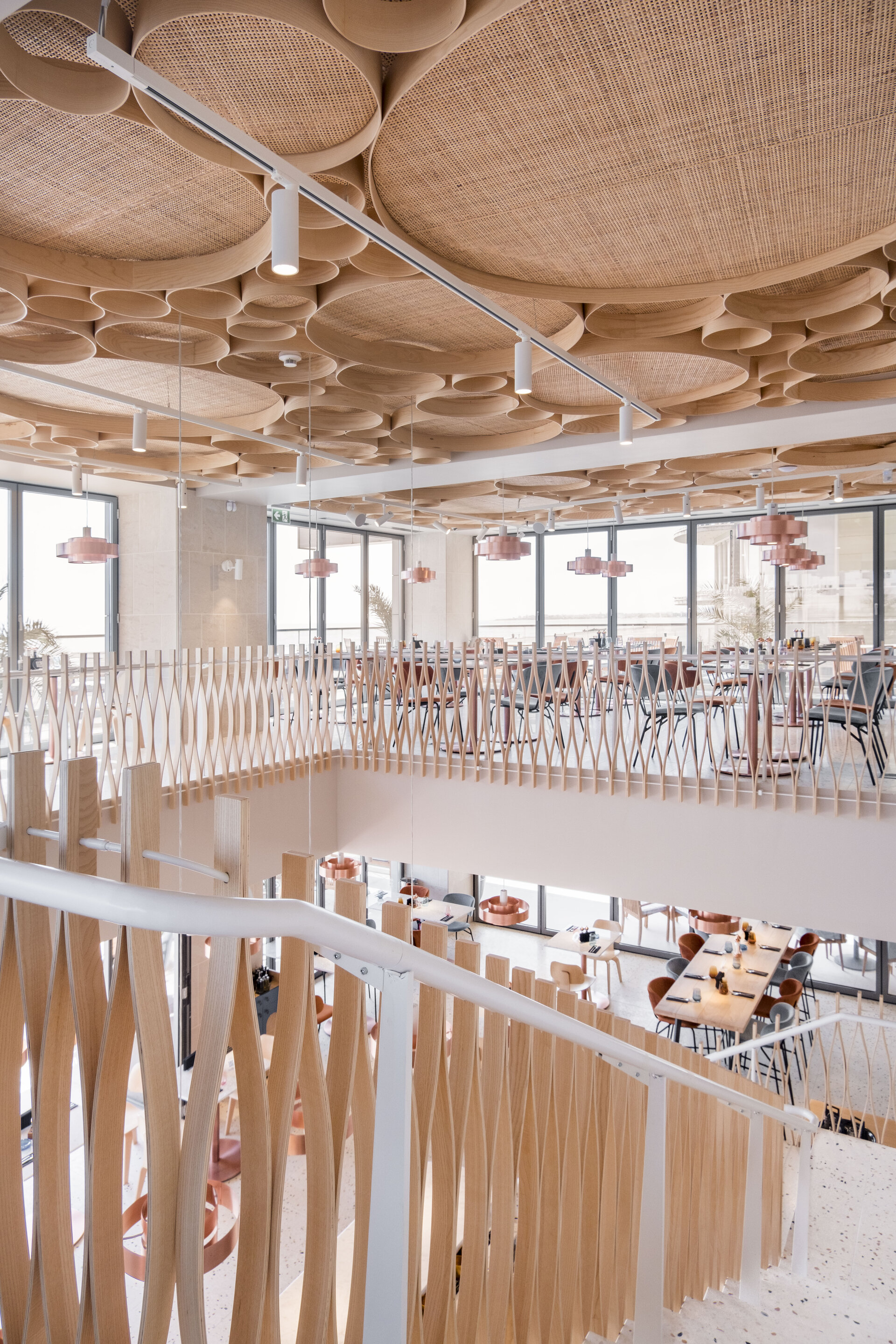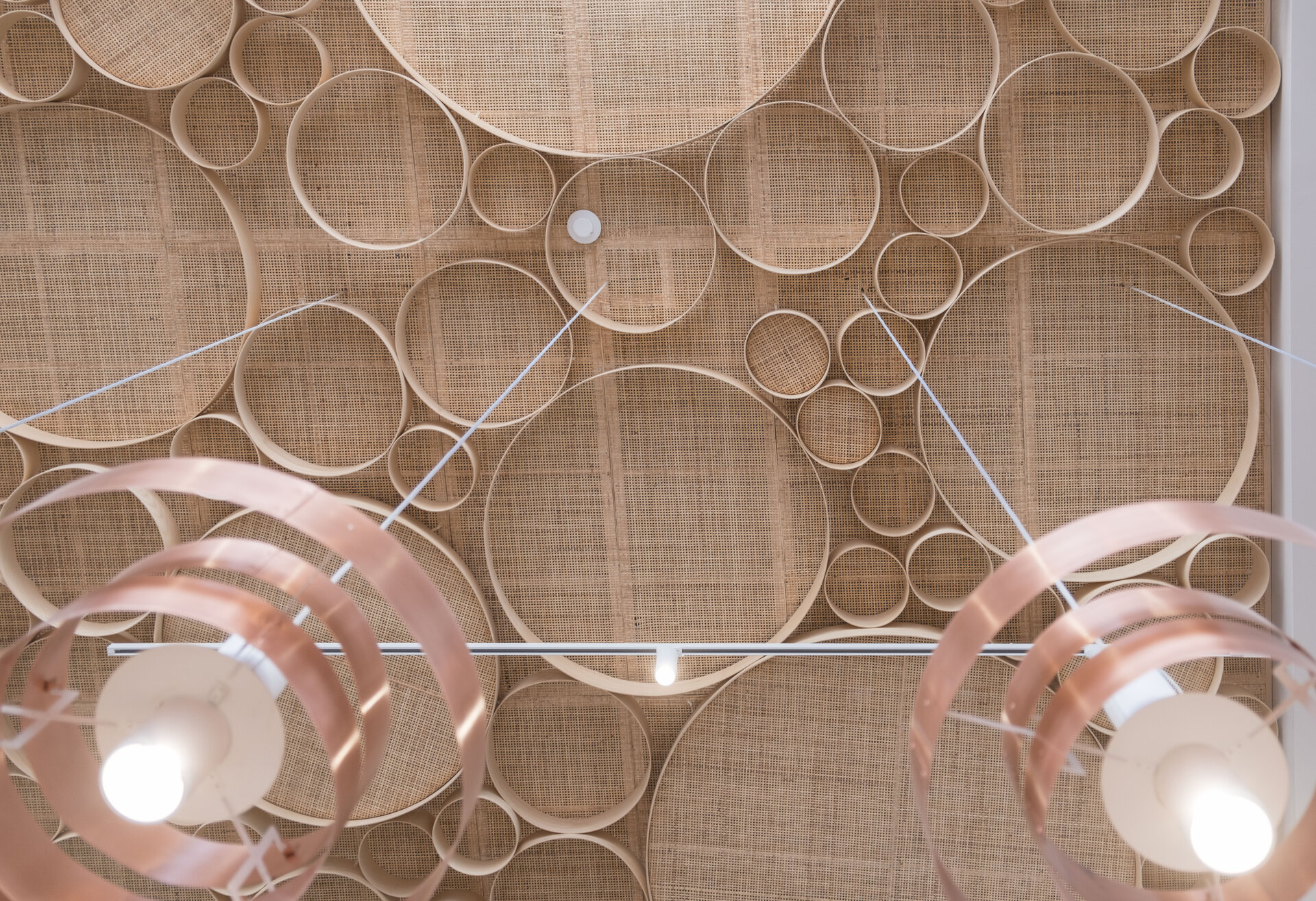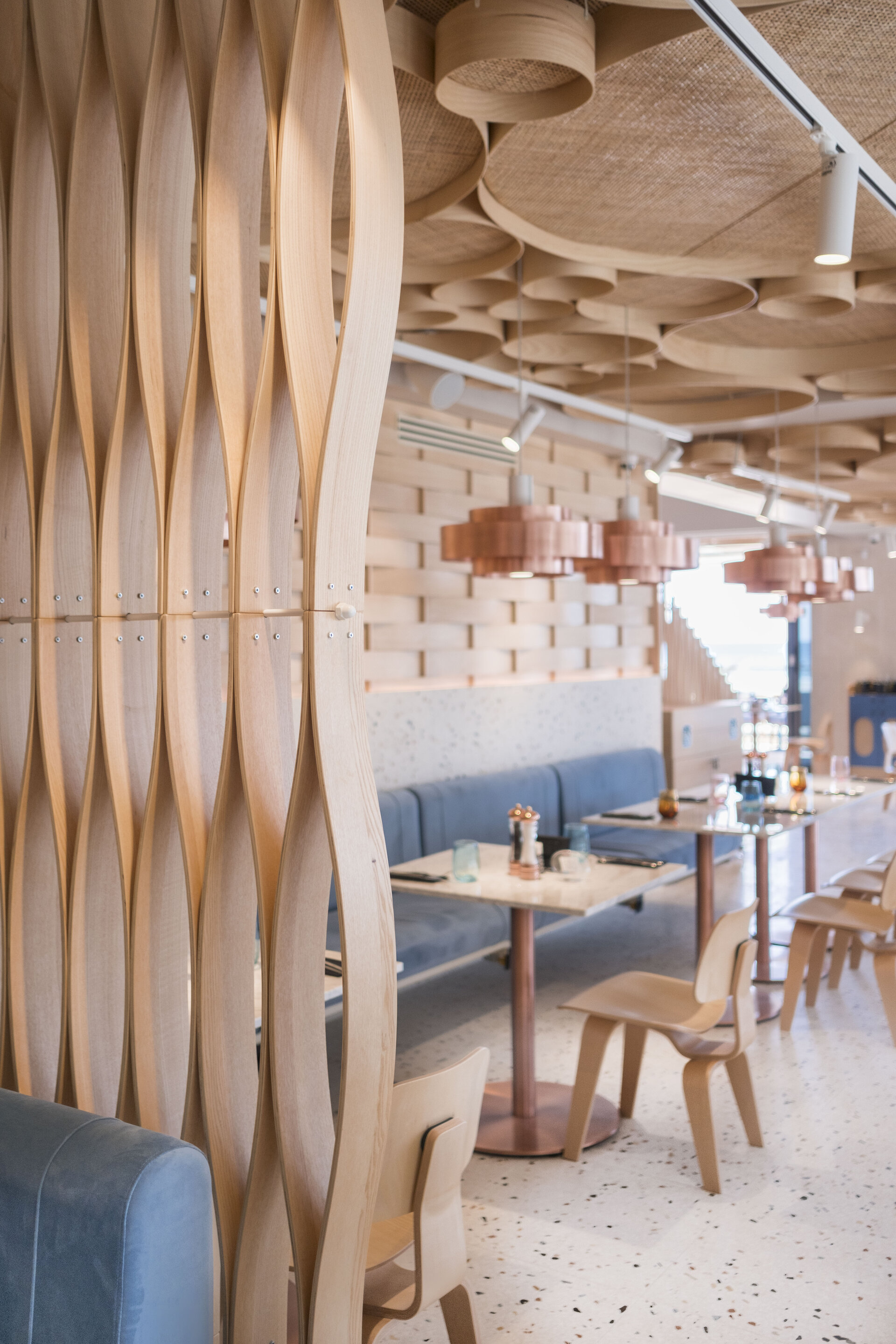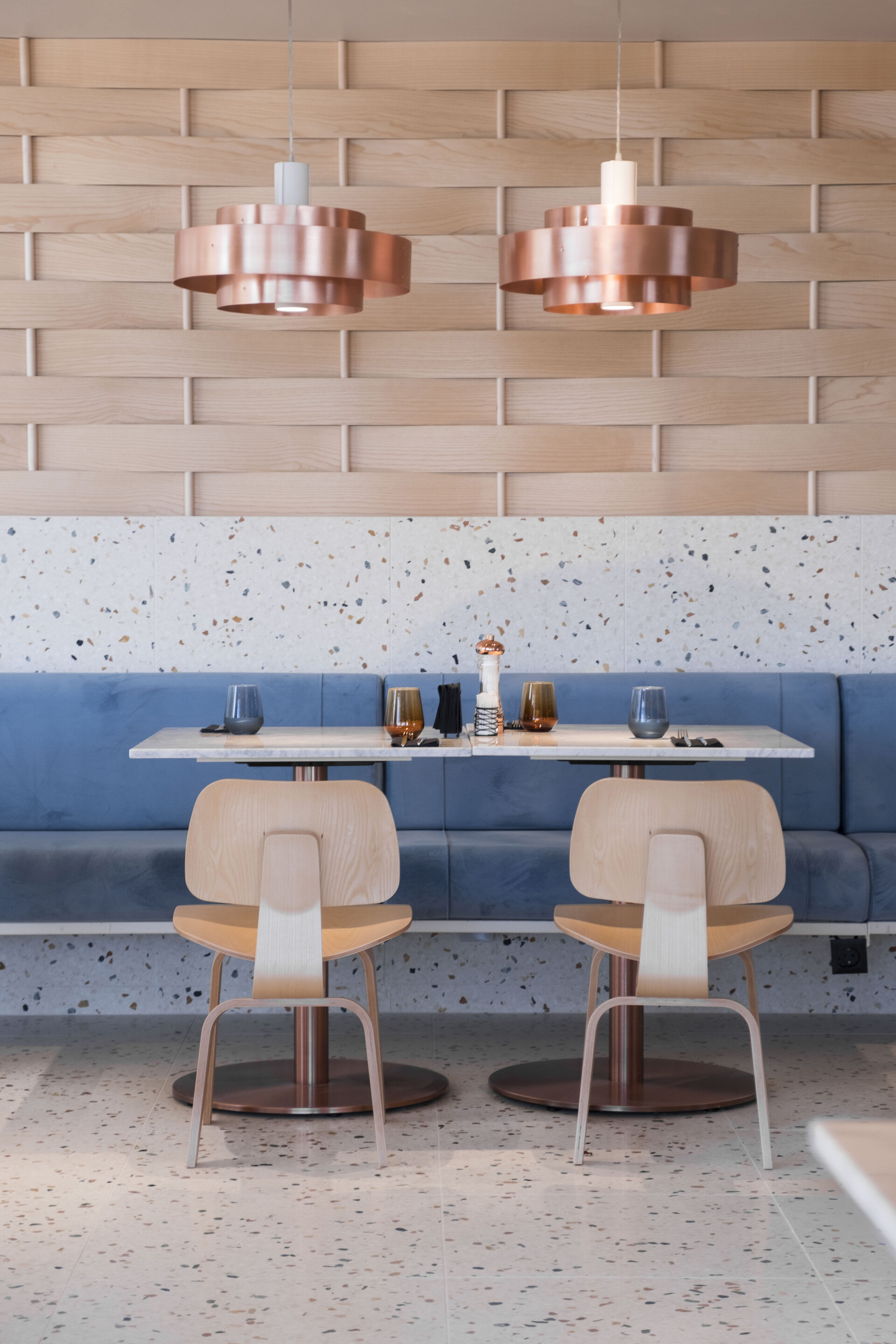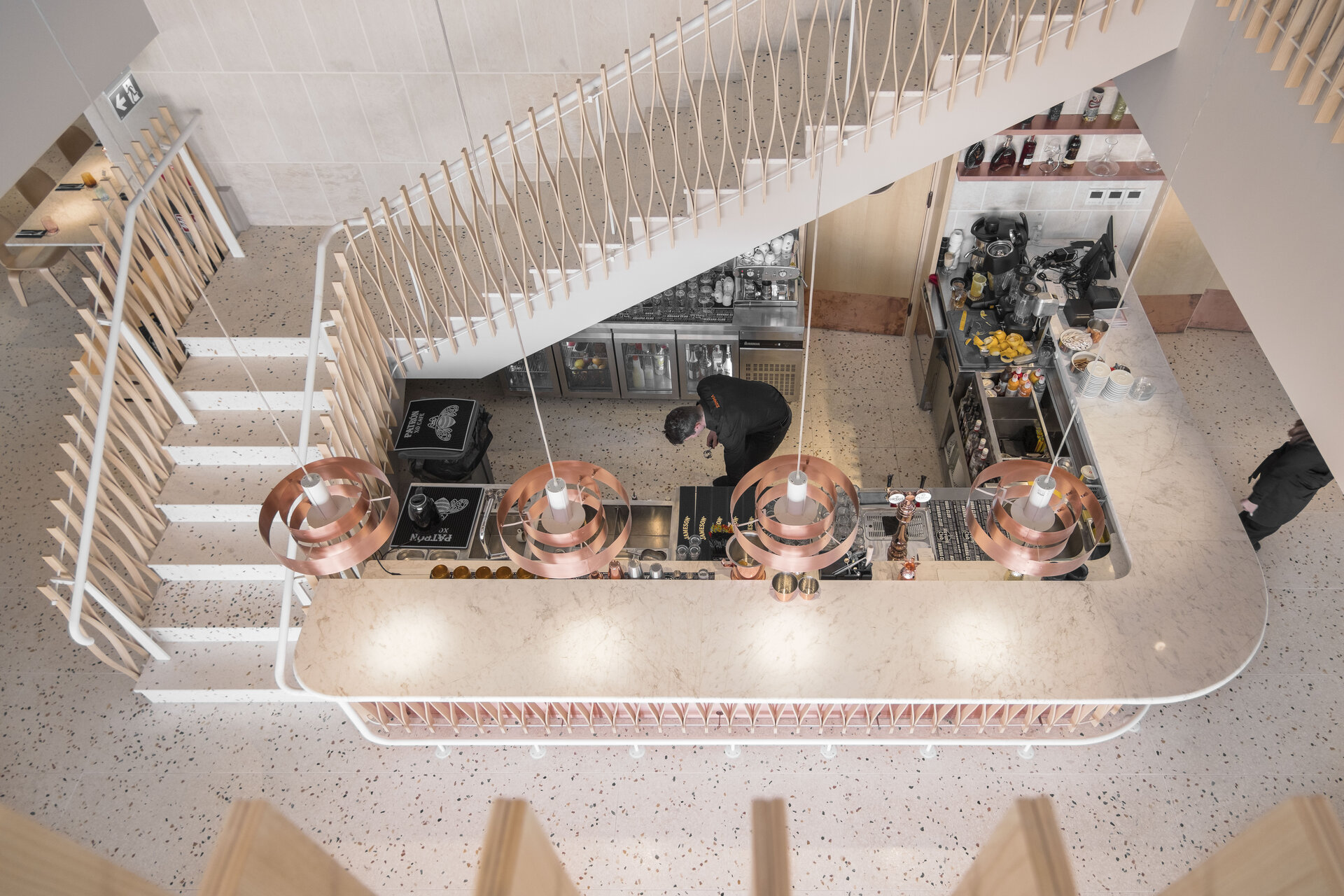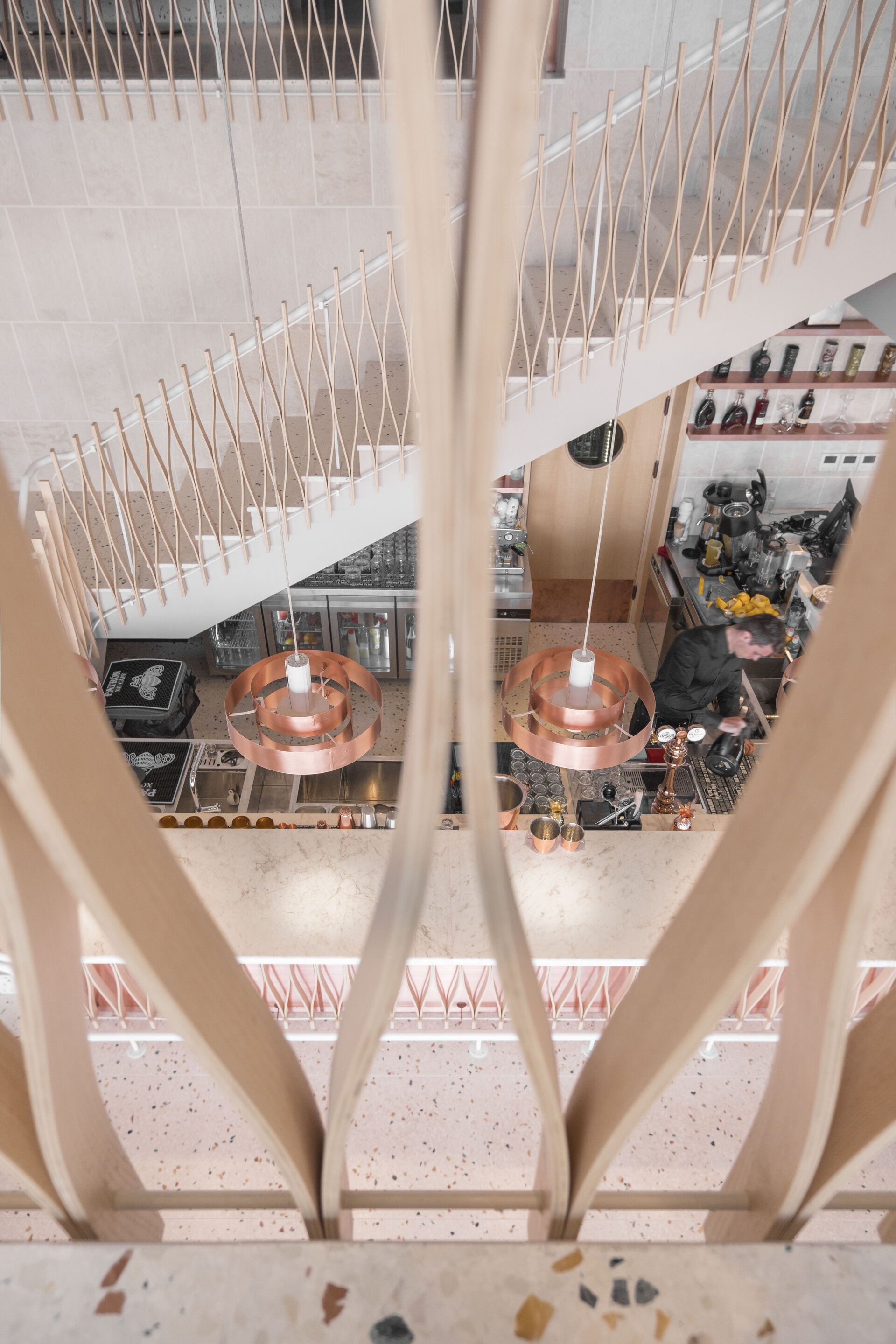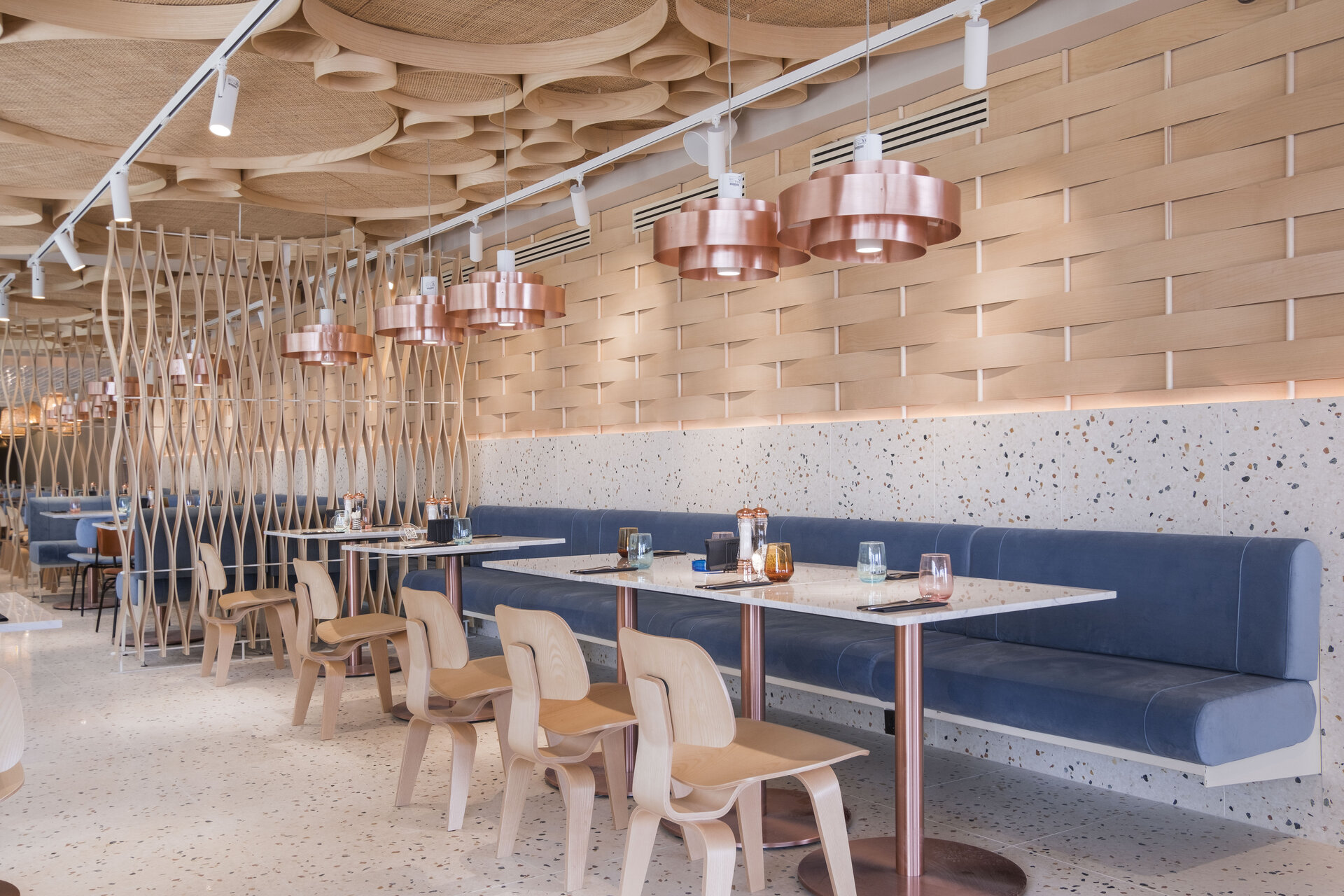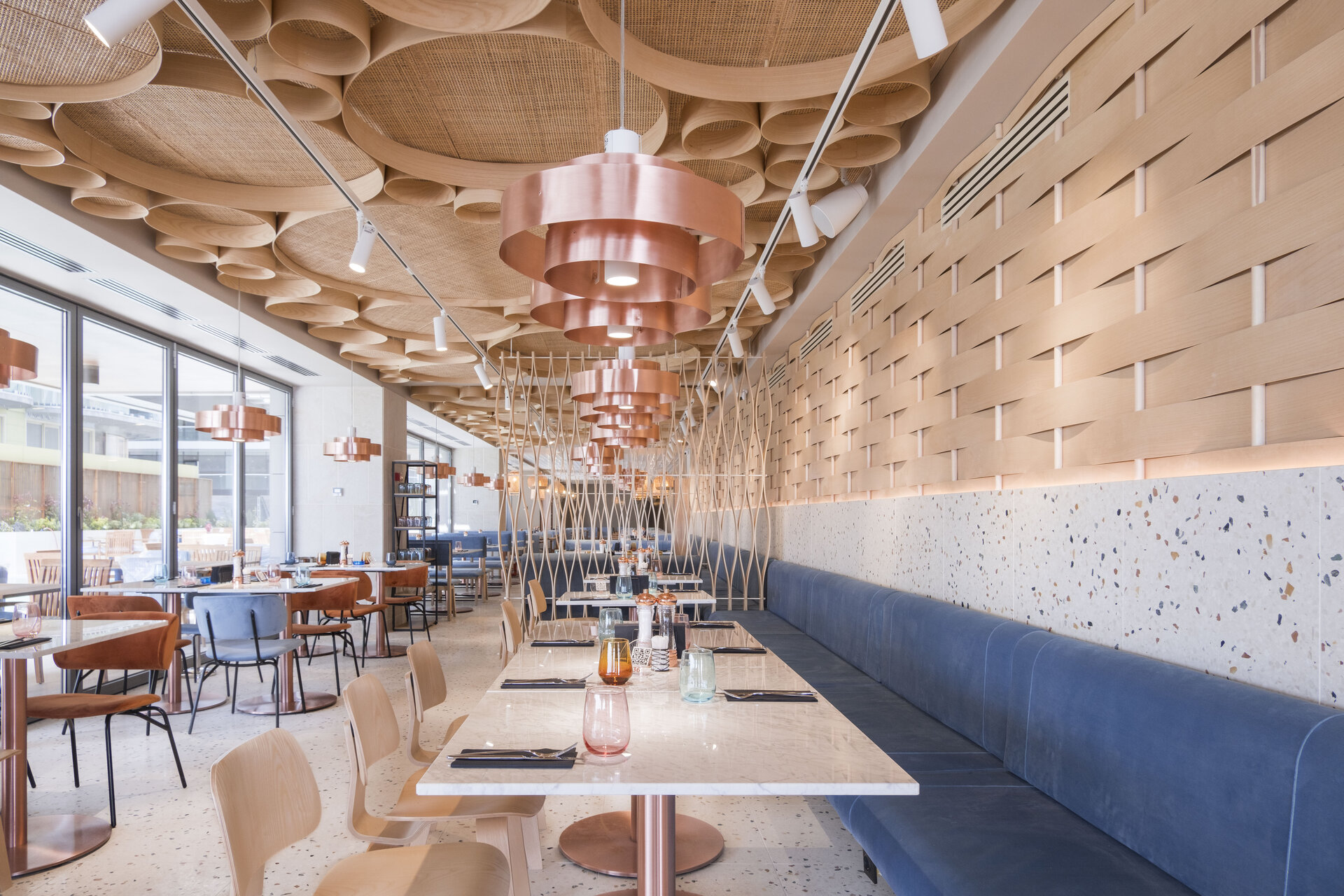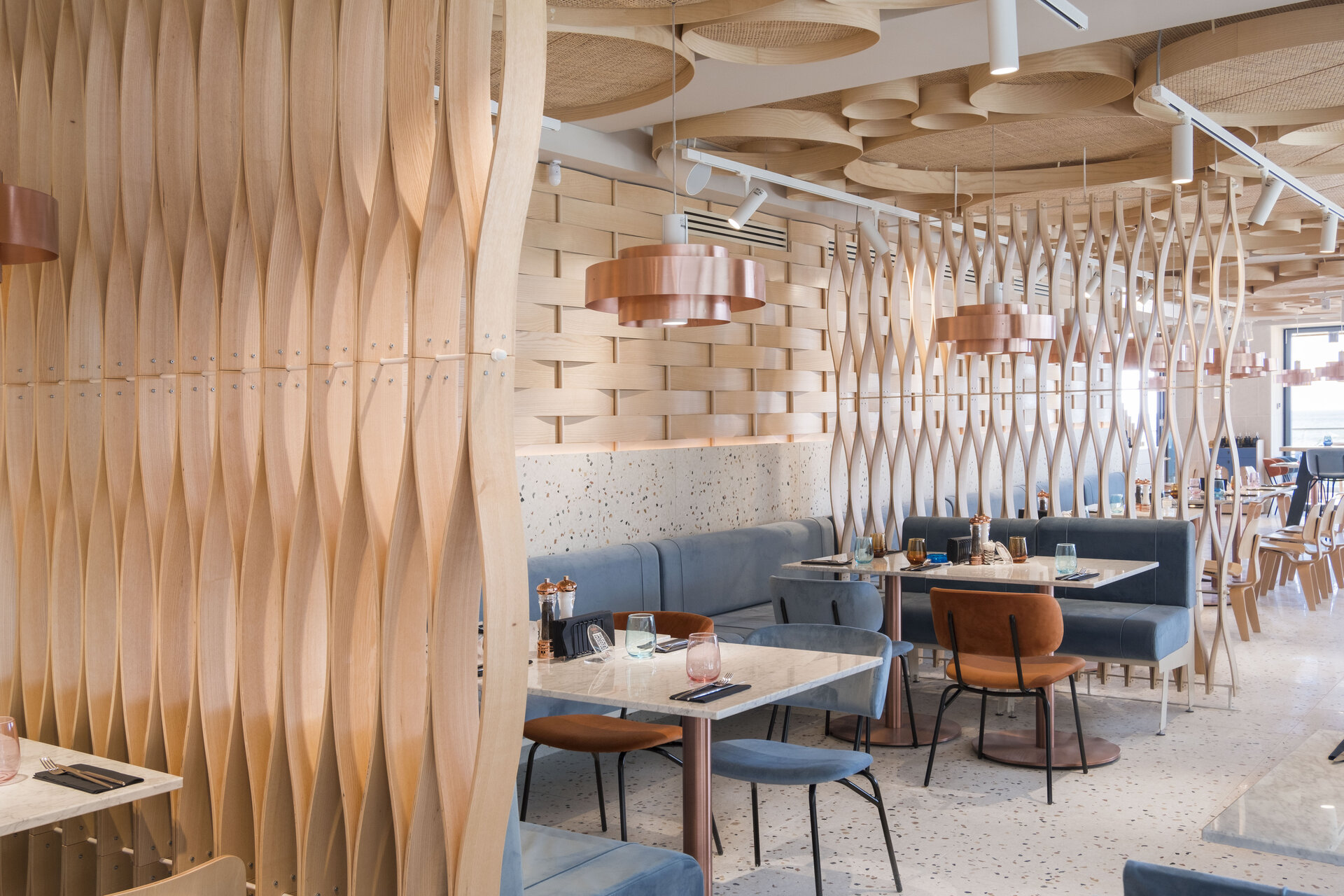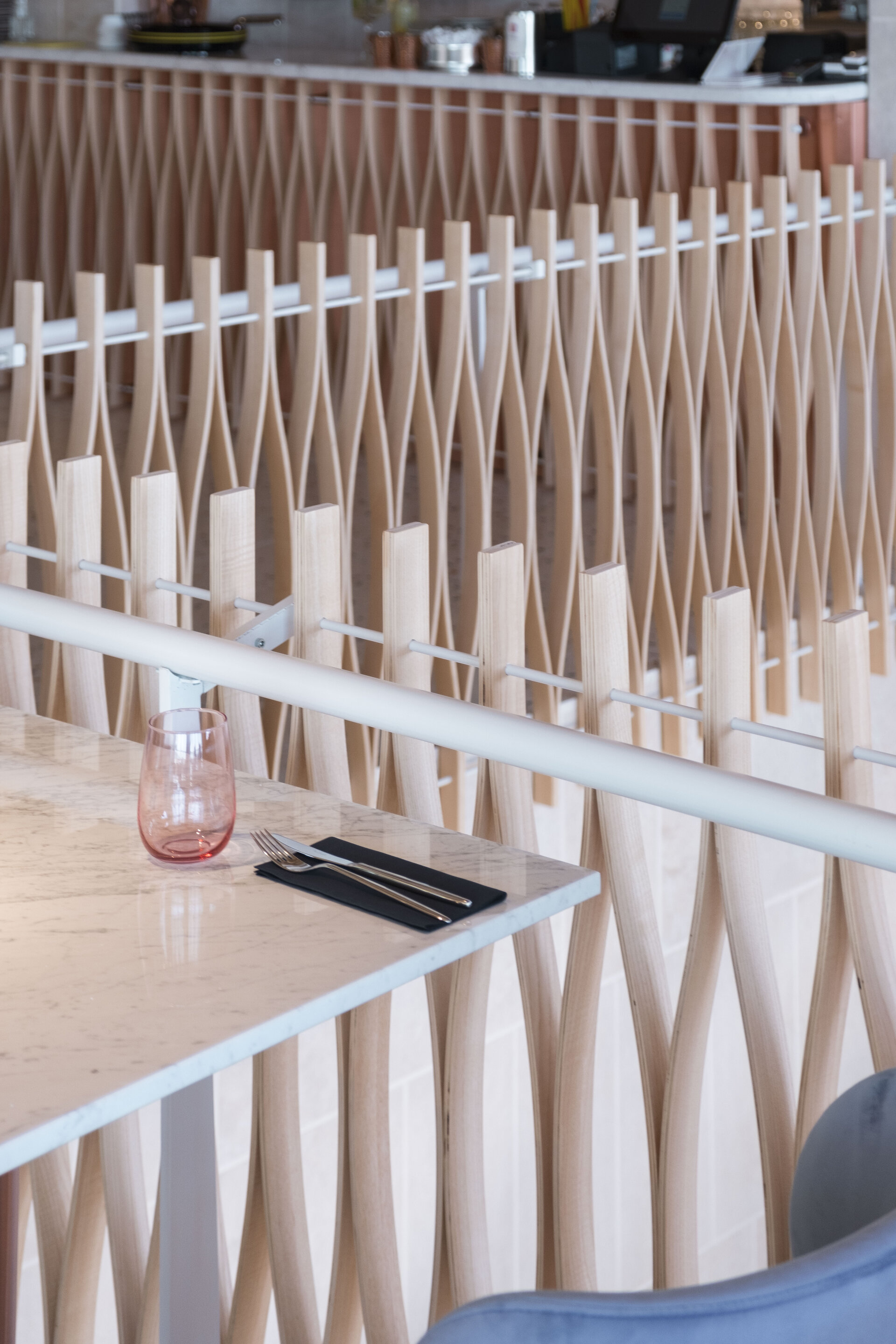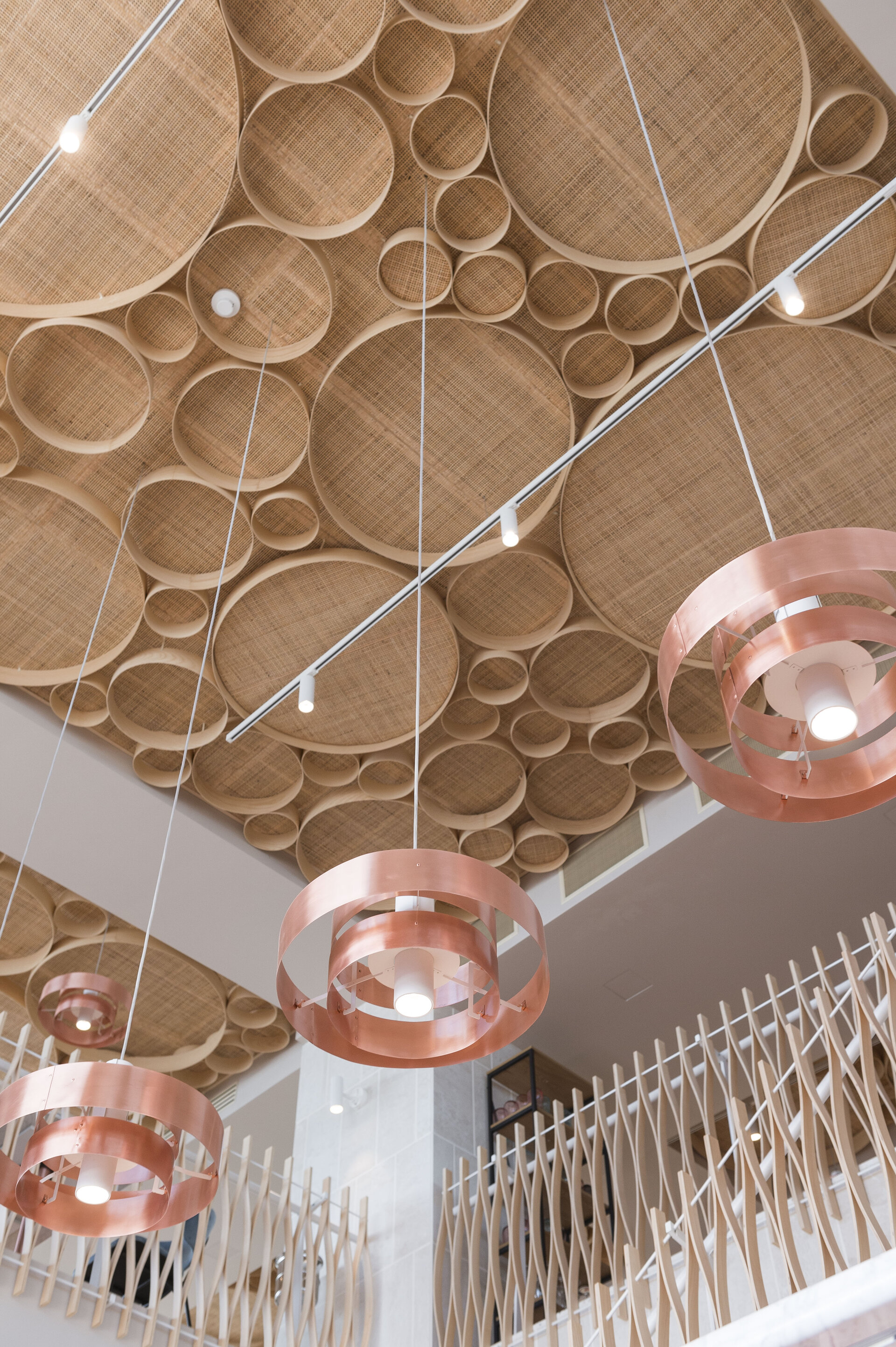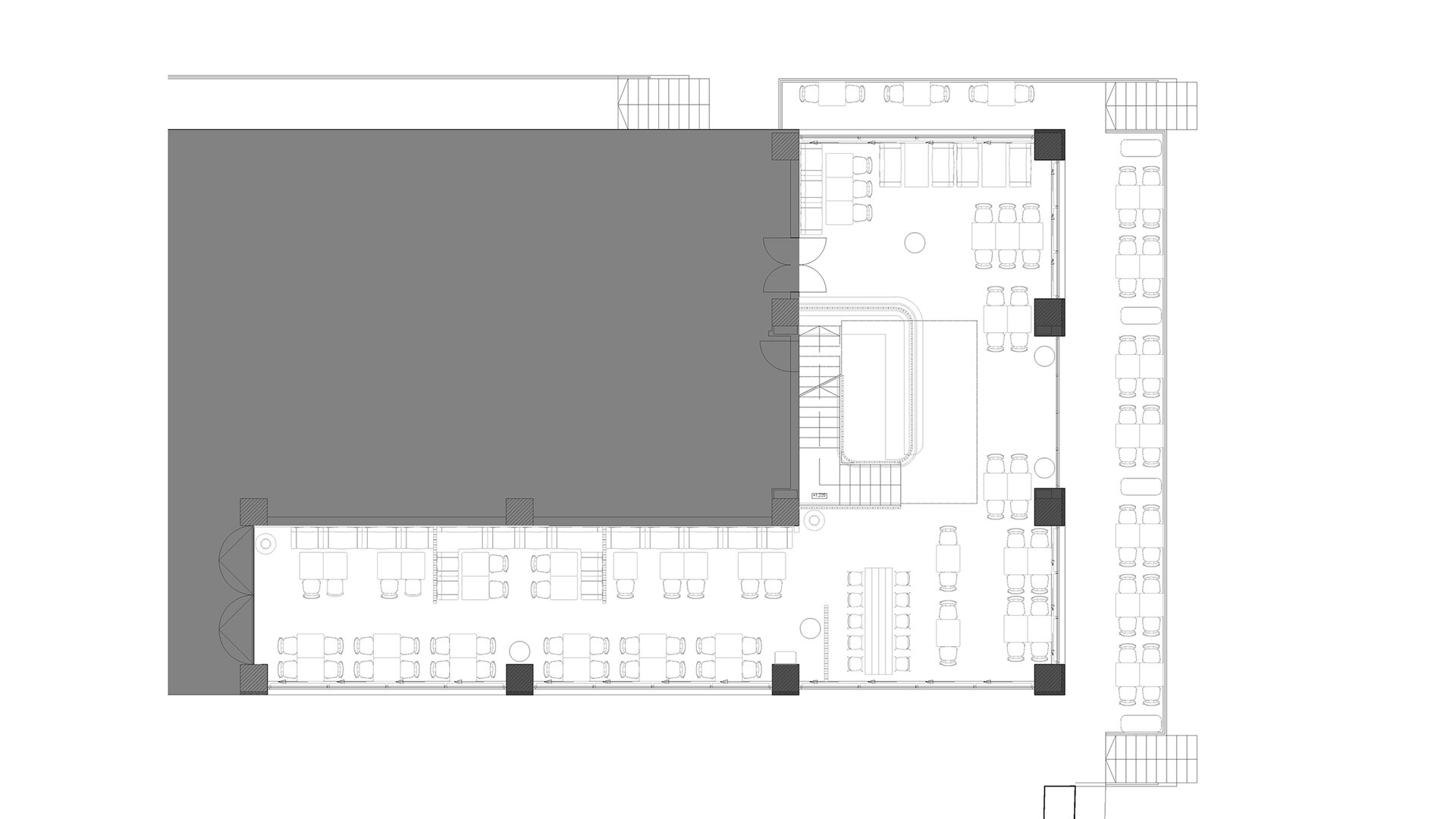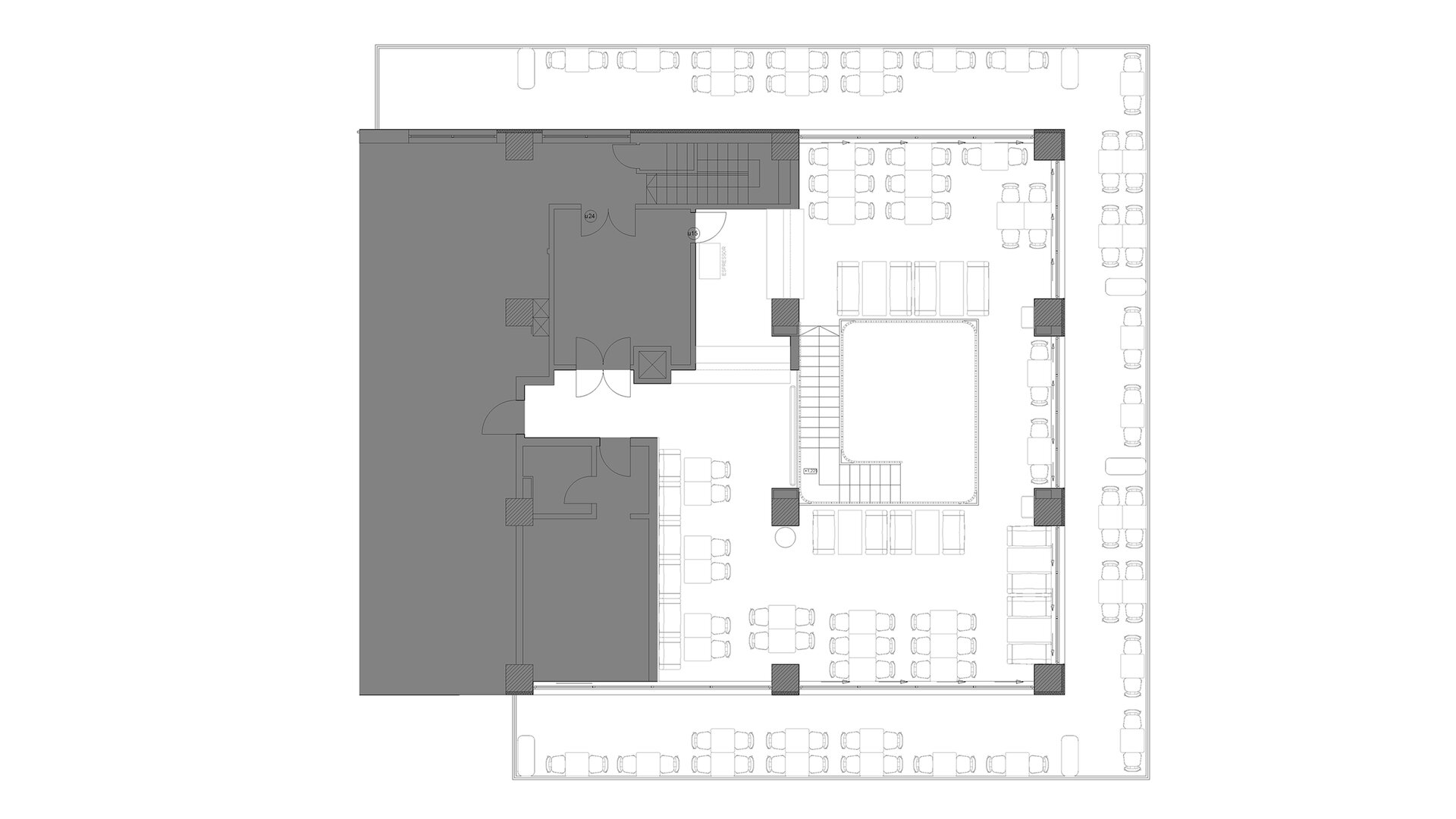
Zumma
Authors’ Comment
Zumma is a beachfront restaurant in Mamaia, by the Black Sea.
The bent plywood pattern in the shape of waves or fish acts as balustrade, see-through screen, bar counter decoration or wall finishing, seasoned with Eames chairs, also in bent plywood. Bent plywood circles solve the ceiling geometry, as scaled sieve baskets weaved in bamboo. It is a single and simple solution for most of the design elements.
Materials are chosen to amplify a fresh, cool sensation during the hot summers, to offer shelter form the torrid beach hours: the off-white terrazzo with patches of color goes also on the wall, while pillars are plated in light colored sandstone, a typical material for the Dobruja region.
The rattan ceiling keeps most ducts and vents hidden while inducing a sensation of transparency and breathing. Custom designed lamps and details are in copper, kitchen doors have round windows, from the maritime vocabulary, to fit the fish menu and seaside location.
The bar and the stair are central to the space and the access is in the ample void between levels so most tables have direct view towards these two dynamic elements, overlapping into an energetic and interest generating focal point.
The serene design made of durable, natural materials, is less prone to go out of fashion and be replaced just for it being obsolete, as it happens with many hospitality projects. Permanency is the best sustainability.
The use of the same plywood material across various elements throughout the restaurant is an elegant and efficient way to ensure a cohesive aesthetic while optimizing material usage. It subtly incorporates maritime thematic elements, evoking a coastal ambiance without being overt or overwhelming.
Sustainability is achieved through the use of eco-friendly materials and energy-efficient systems. Plywood is a key component due to its efficient use of wood resources, maximizing yields and reducing waste. Local sandstone from the Dobruja region further reduces construction impact by minimizing transportation distances, reducing carbon emissions, and supporting regional economies.
Terrazzo, a composite made from recycled aggregates, contributes to waste reduction and resource conservation by repurposing materials, diverting them from landfills. The use of durable and long-lasting materials aligns with the project's goal of reducing its environmental impact by promoting reuse, minimizing waste, and recycling where possible.
- IKI
- SERAFIM coffee bar
- Berliner Donuts
- Moonlight Venue - The Magic Factory
- Hiro Bay
- Comun Cafe - City of Mara
- Vié
- Novum Med Spa Olimp
- G.Y.S.T.
- Fain
- Biutiful Downtown Terrace
- Le Boutique
- Trickshot AFI Brașov Restaurant
- Poesia Restaurant
- Donerboom
- Sciccheria Restaurant
- Prestige Hotel
- Al Pastor by MAT
- Platforma Wolff DJ Bar
- French Revolution Victoriei
- Rosetti Aparthotel
- Zumma
- Origo 2.0
- La hambar restaurant
- Nuba Chalet
- Cocktail Bar “La Mița Biciclista” Creative Establishment
- 1896 Brasserie & Lounge, Constanta
- Meron Cișmigiu
- Nuba Palace
- Mano + Bocca Panini Bar
- South Burger Garden
- Hotel Radisson Blu Aurum Brașov
- BAR TON
- LABORATORIO
